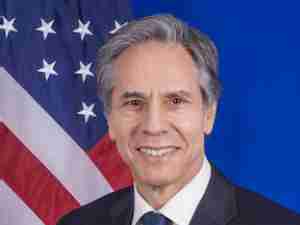He still turns a profit from his coffee, fruit, cotton, corn, sheep and cattle operations, but he has abandoned planting soybeans, once his main crop, which attracted many Americans like Topp to Brazil.
"There've been a lot of Americans that have shown up here and been told a fairy tale and a lot of them haven't done very well here," Topp said
Brazil's soy area has doubled since 1990 to become the world's second largest after the United States and output has nearly tripled in the same period. With high land prices and limited area for expansion in the United States, Brazil appealed to some US farmers with a desire for adventure.
Trade groups say there are at least dozens who have made the move to Brazil, although neither the US Embassy nor the local agriculture ministry could provide figures.
But two years ago, Brazil's real began appreciating against the dollar, which hurt the local earning power for soybean exports. Brazil exports much of its crop. Oil prices also skyrocketed, driving production costs through the roof, from diesel fuel to petroleum-based agrochemicals.
"The situation with soybeans has been really tough because of the exchange rate. It's still hard to pencil in much of a profit with them," Topp said.
Brazilian soybean growers have also had to grapple with Asian soy rust, a pernicious fungus that arrived in Brazil a few years ago. Rust has consumed around 4.5 million tons of the 50 million ton crop over each of the past three years.
Growers must buy costly fungicides and spray plants as much as five times a crop, greatly raising costs. Rust arrived in the United States two seasons ago but has not been as widespread because of the cold winter that keeps it in check.
Brazil's area planted to soybeans is expected to fall again for the second year running from a peak of almost 23 million hectares (57 million acres) two years ago to just over 20 million this season.
Topp is making ends meet by focusing on other productive aspects of his farm, such as coffee and fruit. Brazil is the world's largest exporter of coffee but also the No. 2 consumer of coffee after the United States.
"Coffee operations are doing really well because of solid prices and costs are in check," Topp said of the 250 acres of irrigated coffee trees on his farm. He also produces papaya for the local consumer market.
Turnaround in the cards?
The 25-year expansion on Brazil's soybean frontier has allowed great inefficiencies to go unnoticed until now.
"This will be healthy for the industry, which has never had to deal with this type of tight market," said Phil Corzine, a director at South American Soy LLC, a US-based private equity fund that has invested in Brazilian farm land.
The company raised $1.3 million from investors who wanted a piece of the Brazilian soy boom. The company bought 3,500 acres three years ago in southern Tocantins state near the border with Goias in the center-west grain belt. Local agents were hired to manage its two farms.
Corzine said US farmers are some of the best in the world at low cost production and it was this know-how that he wanted to set loose in Brazil.
"Believe me, we're not having fun down there, we're not making a lot of money," he said from his office in Illinois. "We've been up front with our investors that it was going to be rough for a few years... But things are turning around."
Corzine said the company will only plant 100 hectares of soy this season -- below potential -- on the farm's best fields and reduce input costs to maximize margins. Even so, profits would not cover the cost of clearing and conditioning new fields on the farm.
Many soy producers have abandoned farm land on Brazil's agricultural frontier because of the high cost of getting supplies to the remote regions, the cost of transporting beans to market and








